The final frontier
Permanent linkAll your Passover dessert conundrums solved
.jpg)
I know many home cooks who make elaborate Passover meals for an insane number of family members, friends, and those in their community who do not have their own seders or Shabbat Passover dinners. These cooks create meals that feature course upon course of delicious and complicated food ornately displayed on platters with garnishes garnishing the garnishes. As a chef, I am impressed and blown away by the care and time taken to prepare the festive meals. As a mom and home cook, I am puzzled by the plethora of dishes and platters. Where do they keep all this stuff? These meals are sumptuous and elegant until dessert.
Dessert for a professional chef is understood to be the last bite of food that is meant to speak to the guest. It is the final message that says who we are and how we feel about you, the diner. For home cooks, it can be the final straw. I have been taken to heights of tongue titillating ecstasy with appetizers, soups, and entrees only to be dashed to the ground by a packaged, store-bought or worse yet, flown in from a faraway bakery, a Pesadich disaster. Who could blame the cook? Making huge dinners for large numbers of hungry guests and then you throw the Passover restrictions into the mix and it not hard to see why dessert is the final frontier. The place that no one wants to go!
Most of these disasters are disastrous because the cook/bakery thought it would be a good idea to mimic a cake or other pastry normally made delicious when all ingredients are fair game but during Passover the cupboard is bare or at least really sparse and many desserts are off limits. Ersatz ingredients are not good substitutes. My Passover philosophy is this: If I wouldn't eat it during the rest of the year, I'm not going to eat it during Pesach. I would much rather truly mark this time as one separate from the rest of the year, and go eight days without cake, brownies, and pie than use ersatz ingredients. The secret to good desserts during Pesach is to understand your ingredients and how they work.
The Feast of Unleavened Bread is confusing to many people. I know experienced cooks and observant Jews who do not understand how a cake recipe for Passover can include baking powder and baking soda and not be considered leavened. I know many people who think that we can only eat "flat" food during Passover.
It is common to think that the options during the holiday do not include delicate, fluffy, and lovely cakes, but they do!
There are a lot of misconceptions about leavening and what differentiates leavened food from unleavened food. These are the four different types of leaveners.
Understanding Leavening:
Biological leaveners
Typically yeast, also beer, kefir, sourdough starter, yogurt are in this category.
Yeast produces carbon dioxide which is part of the organism's life cycle called fermentation. The process of fermentation is one in which carbon dioxide is released in the form of foam or bubbles which create air pockets which when mixed with starch form a sponge-like matrix that gelatinizes and "sets" the holes left by the gas bubbles. Ethanol is a waste product of yeast and adds character and flavor to the end product. These leaveners are not permitted during Passover. While kosher for Passover yogurt can be eaten during Passover, it may not be combined with wheat.
Chemical leaveners
Common chemical leaveners are baking soda and baking powder
Chemical leaveners rely upon heat and acid in the batters and doughs to activate. A balance of acid and alkali with heat cause the chemical leaveners to give off carbon dioxide. These leaveners are usually used in cakes, quick breads, and cookies when a prolonged fermentation would be undesirable or not practical. These leaveners are permitted during Passover.
Mechanical leaveners
Rapid whisking and beating air into food with the aid of a whisk and/or mixer.
Creaming is the process of beating air into sugar and fat. The sharp sugar crystals cut holes into the fat structure leaving air pockets in the fat. Whipping egg whites and whole eggs creates a foaming action that produces a sponge type of matrix that supports batters and custards (think of soufflés and chiffon cakes).
Most home cooks have employed a mechanical leavener when beating eggs and sugar to a "ribbon" stage in baking or when whisking together egg whites to lighten matzo balls. This type of leavening is commonly used in baking and is permissible during Passover.
Other leaveners
Steam can leaven cakes and puddings, and nitrous oxide forces air into whipped cream which, when whipped, can be folded into batters.
Kosher For Passover and throughout the year:
Vanilla Beans
One of the greatest joys when baking is adding the vanilla. I love the aroma with its floral bouquet. Suddenly the simplest recipe becomes a gourmet treat. When my sons were very young, I would perch them on the counter next to where I was cooking and let them smell the ingredients going into the dish. My oldest son, Zachary's eyes would light up and he would announce 'smells like yummy in here,' when I pulled the vanilla extract out of the cabinet.
Vanilla is a flavoring derived from an orchid native to Mexico. Vanilla is the second most expensive spice after saffron due to the extensive labor needed to grow the plants and harvest the seed pods.
Vanilla is used mainly in the cosmetic and culinary industries. Vanilla is available for culinary use as a whole pod or bean, a powder, extract or paste.
Vanilla beans or pods are not kitniyot (foods avoided during Passover) and are considered by the highest level or rabbinic supervision to be allowed for use during Passover.
Vanilla beans deliver an assertive vanilla flavor and when split open and scraped add small black specks or seeds. The seeds are edible and are considered a gourmet touch. I use vanilla beans in my flans, crème brulees, and homemade ice creams during the holiday and year round. Vanilla beans do not require kosher supervision.
Vanilla extract is an effective way of adding vanilla flavor to a recipe. Vanilla extract contains at least 35% alcohol which evaporates during cooking. Vanilla extract requires kosher supervision.
Vanilla powder is a mixture of vanilla pods, sugar and starch. Vanilla Powder is not kosher for Passover.
Vanilla paste is a mixture of vanilla pods and corn syrup. Vanilla paste is not kosher for Passover.
While kosher for Passover vanilla extract is available, the quality of the product is not great. The vanilla is inferior and the product is very expensive. Many of the kosher for Passover extracts contain artificial vanilla flavor and artificial color added and blended with real vanilla.
For my Passover baking I prefer to go with the real thing and I reach for whole vanilla beans. A high quality vanilla bean should be shiny, plump and moist. To use a vanilla bean: When you are ready to add the vanilla to your recipe, use a sharp paring knife to slice the bean in half lengthwise, about 7/8 of the way. Scrape the seeds from each half of the bean and add them to your ingredients.
Generally, one inch of whole vanilla bean equals one teaspoon of extract. You may not need the whole bean for a particular recipe. You can store your vanilla bean covered in a jar away from light. Do not store vanilla beans in the freezer or refrigerator. They may become dry and brittle.
When you have scraped the entire bean, save the pod. I like to save used pods in my sugar container. All my sugar has a faint vanilla fragrance. Vanilla beans are available in most grocery stores or online.
Chocolate Mousse with Extra Virgin Olive Oil
This recipe is magical. You can serve it as a mousse, as a frozen dessert, or baked as a flourless chocolate cake! One recipe gives you 3 different desserts. In previous years, Passover chocolate was not of a high quality, now we can eat chocolate desserts with newer chocolates made without lecithin (a soy product and not kosher for Passover) and still with a high cacao content.
Serves 10
7 ounces best quality semisweet or bittersweet chocolate (for Passover, I only use Schmerling's 70%)
½ cup mild extra virgin olive oil
4 large eggs, separated
¾ cup kosher for Passover confectioners' sugar
⅓ cup brewed espresso, or water
1 vanilla bean, scraped
2 tablespoons kosher for Passover rum or other liqueur or water
1. In a small saucepan, melt chocolate over very low heat. Remove from heat, let cool to room temperature, add the olive oil, and mix well.
2. In a bowl, combine the egg yolks and sugar and whisk until foamy. Add espresso or water, vanilla bean and liqueur. Whisk until well blended. Add the chocolate mixture and whisk together until well blended. Scrape down the sides of the bowl with a rubber spatula.
3. Using a standing mixer, or a hand-held mixer, beat the egg whites until they form stiff peaks. Scoop about one-third of the egg whites and fold into the chocolate mixture with a rubber spatula. Repeat with half of the remaining egg whites. Finally, fold in remaining egg whites until no white streaks remain visible.
4. Transfer mousse to a 10 inch spring form pan, bowl, or individual serving glasses. Cover and refrigerate for at least 8 hours, or overnight. Alternately for a frozen chocolate terrine, mousse can be frozen for at least 5 hours or for up to 3 days. To bake the mousse into a flourless chocolate cake: Preheat oven to 350. Line a springform pan with parchment paper and lightly grease the parchment paper and sides of the pan and then sprinkle the parchment paper and sides with cocoa powder. (All 100% cocoa powder is kosher for Passover) Bake for 30-40 minutes or until a toothpick, inserted, comes out clean. Cool completely before unmolding.
5. Remove the mousse from the refrigerator or freezer, serve as desired. Frozen mousse can be sliced and served like a cake. If freezing the mousse, allow to soften slightly before serving.
6. For added elegance, garnish with a flaky sea salt.
Serve with seasonal fresh fruit.
Clementine Confiture
Passover straddles winter and spring with in-season produce being scanty. But, fresh Mandarin oranges are easy to find and are often sweeter this time of year.
Mandarin oranges are a group of small citrus that include tangerines, Clementines and Satsumas. The fresh mini citrus are brightly flavored and sparkling. You can supreme* them just as you would any other citrus. If you love Mandarin Oranges as much as I do, you can make this brightly flavored and ooey-gooey confit and hang on to the season for just a bit longer.
Serve the confit as a charoset variation by adding chopped pistachios or almonds, pile it on matzoh schmeared with cream cheese, dollop on top of your favorite cheesecake, serve it with a cheese platter, on top of pancakes, or with duck to make my favorite modern Duck a la'Orange .
4 cups sugar
2 cups water
1 pound Clementine tangerines or other Mandarin oranges, cut in half
1. Place a large saucepan over medium heat. Bring the sugar and water to a simmer. Add the tangerines. Cook over medium heat until the tangerines are very soft and the liquid has become a jelly consistency (about 1 hour). Check the "set point" of the jellied confit by drizzling a spoonful; of the juice on to a plate and placing the plate in the refrigerator for 10 minutes. If the juice is thick and not runny, the confit is finished. If it is still runny, continue simmering for another 10 minutes and check again.
2. Store the Confiture, covered in the refrigerator for up to 2 months.
*The beautiful citrus sections or supremes-in French-look picture perfect on a plate and are easy to cut.
Start with a sharp paring knife and cutting board. Cut off a small section from the top and bottom of the fruit. This will give the fruit stability and keep it from rolling around.
Cut down the rind from top to bottom following the curve of the fruit. The goal is to remove the rind and the pith (white bitter part) but not the fruit. Continue until all of the rind has been cut off.
Hold the fruit in one hand and cut ½ into the fruit at one of the dividing membranes. Cut on the other side of the segment along the membrane. This should release the segment or supreme. Continue until all of segments are cut out. Squeeze the juice into a bowl and discard the membranes.
Laura Frankel is the executive chef of Spertus Kosher Catering featuring cuisine by Wolfgang Puck at the Spertus Institute for Jewish Studies in Chicago. Visit Laura Frankel's website at www.lauraskosher.com.



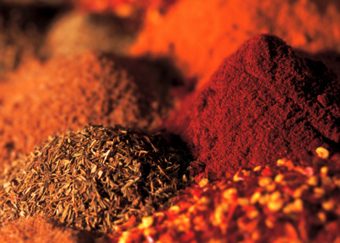
.jpg?n=4181)
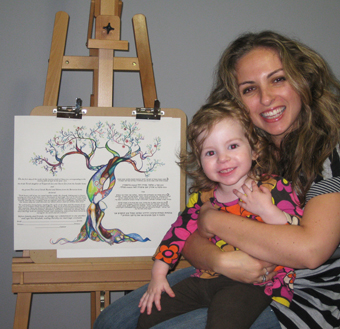
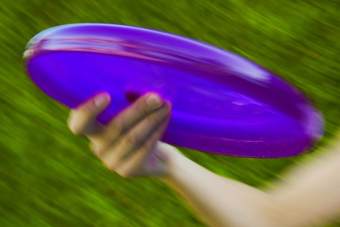




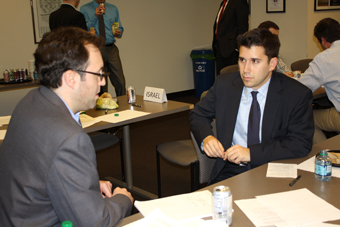
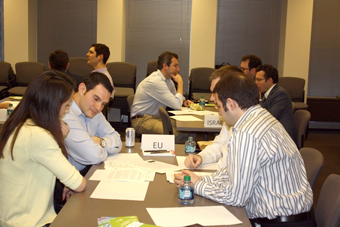
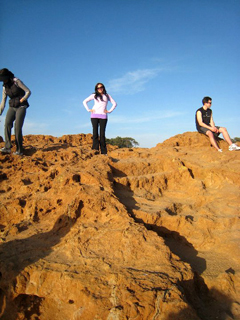





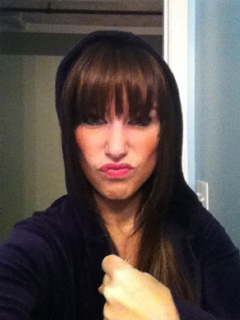
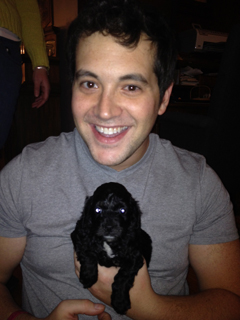

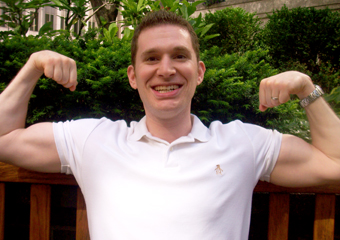

.jpg)



